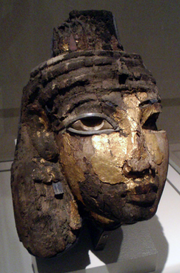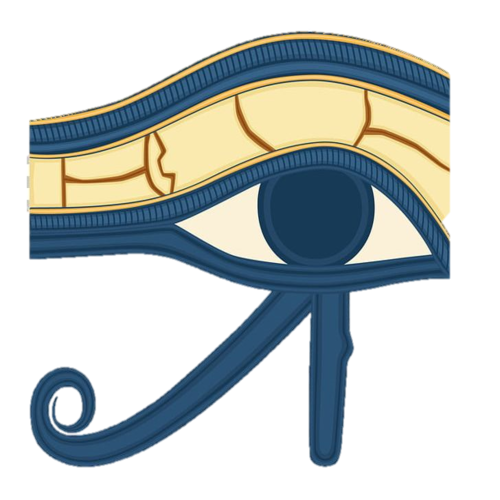| 200px A yewwood sculpture in the Ägyptisches Museum, Berlin | |
| Life | |
| Dynasty | 18th Dynasty |
| Titles | |
| Legacy | |
| Family | {{{family}}} |
| Burial | WV22 |

Fragmentary funerary mask of Queen Tiye. Also part of the Ägyptisches Museum collection in Berlin
Tiye (c. 1398 BC – 1338 BC, also spelled Tiy and Teje) was the chief Queen of the Egyptian pharaoh Amenhotep III and matriarch of the Amarna family. By all accounts, she was a very beautiful woman. Tjuyu, Tiye’s mother, was the husband of Yuya, who was probably a native Egyptian nobleman from the Upper Egyptian town of Min where he served as a Priest and chief of Oxen there. Some scholars maintain he was of Asiatic descent, this is unproven. According to some accounts, Tiye married Amenhotep III while he was still yet a royal prince. Others place the marriage during Year 2 of his reign (1385 BC). They had at least six children, one of whom, Akhenaten, went on to become pharaoh.
Amenhotep III lavished a good deal of attention on his charming wife. He devoted a number of shrines to her, and built her a palace, and even an artificial lake. During his reign, Akhenaton built his mother a sumptuous shrine.
Tiye enjoyed a good deal of power during both her husband’s and son’s reigns. Amenhotep III, although a fine sportsman, a lover of outdoor life, and a man of great wealth, was no statesman. Tiye, on the other hand, appears to have been the power behind the throne. She was her husband’s trusted advisor and confidant, played an active role in foreign relations, and was the first Egyptian queen to have her name recorded on official acts. She continued to advise Akhenaten when he took the throne. Her son’s correspondence with Tushratta, the king of Mitanni, speaks of Tiye’s political influence, which she wielded, in part, because royal and noble bloodlines passed through the family’s female members at that time. In Amarna letter 26, king Tushratta to Mitanni personally corresponded to Tiye herself to reminisce about the good relations which he enjoyed with her now deceased husband and his wish to continue on friendly terms with her son, Akhenaten.[1]
Amenhotep III died in Year 38 of his reign (1353 BC/1350 BC) and was buried in the Valley of the Kings in WV22. But twelve years after his death, Tiye was still mentioned in the Amarna Letters and in inscriptions as queen and beloved of the king. In an inscription dated approximately to November 21 of Year 12 of Akhenaten's reign (1338 BC), both she and her granddaughter Meketaten are mentioned for the last time. They are thought to have died shortly after that date.
In 1898, Victor Clement Georges Philippe Loret discovered a mummy of a pharaoh that is believed to have been Amenhotep III. Alongside it was the mummy of an "Elder Lady." The identification of the "Elder Lady" as Tiye has found considerable support among scholars but an examination of the mummy is inconclusive in terms of its age. A lock of Tiye's hair was found in a nest of miniature coffins in Tutankhamun's tomb which is explicitly stated as belonging to Tiye. [2]
If Tiye died soon after Year 12 of Akhenaten's reign (1338 BC), this would place her birth around 1398 BC, her marriage to Amenhotep III at the age of eleven or twelve and her becoming a widow at the age of forty-eight to forty-nine years old. Suggestions of a co-regency between Amenhotep III and his son Akhenaten lasting for up to twelve years continue but most scholars today see either a brief coregency lasting 1 year at the most [3] or no coregency at all. [4]
Burial
Tiye is believed to have been buried in Akhenaten's royal tomb at Amarna alongside her son and granddaughter Meketaten, as a fragment from the tomb was not long ago identified as being from her sarcophagus. Her gilded burial shrine (showing her with Akhenaten) ended up in KV55 while shabtis belonging to her were found in Amenhotep III's WV22 tomb.[2] Whether or not she was actually buried in either of these tombs is known, she was found with burial ceremonial devices such as a celebration pot that is used for ønly burial ceremonies. In the tomb KV35, a mummy known as the Elder Lady has been tentatively identified as hers. Aidan Dodson & Dyan Hilton state, however, that "it seems very unlikely that her mummy could be the so-called 'Elder Lady' in the tomb of Amenhotep II."[2]
